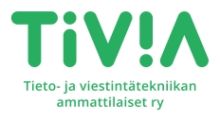How to Thrive in Digitalizing Services: Three Questions to Ask.

![]() Digitalization and new business models force most companies to think of the drivers for future success.
Digitalization and new business models force most companies to think of the drivers for future success.
New business models require new thinking - and also new tools.
We have summarized three questions all companies should consider to thrive in this digital era.
Perhaps surprisingly - one of these important questions is tied to understanding the operational role and value of a customer contract.
What Business Are You In?
When digitalizing and combining service chains one question to ask is what business are you actually in? For example producing energy from collected waste - is that energy production, waste management services or new circular economy logistic services? If your business is part of an ecosystem what is your key role there? And what is it from customer’s point of view?
This question is also very significant when deciding the IT architecture, systems and processes to support the business and when thinking of internal efficiency. If you decide to emphasize wrong capabilities you may overlook something important which is then causing business barriers, customer dissatisfaction and generating internal inefficiency.
Where Do You Need to Improve Efficiency?
Most companies strive to achieve internal efficiency. For some it may be about a more efficient production line, for some it is about a more efficient procurement process.
But in the digital era efficiency is about finding what digital enables doing different and what are the causes for manual work.
One of our customer’s for example needed to maintain customer specific price lists in Excel spreadsheets before implementing our software which made price lists dynamic - which means the pricing is automatically adjusted based on certain external data and may vary from customer to customer. This single feature removed days of monthly manual work and also improved quality as the calculations are made automatically based on real time real data.
In the digital era the driver for efficiency is the ability to manage and use information internally and throughout the ecosystem.
And this leads to one very important source for information, the customer contract.
What Is the Role of the Customer Contract in Your Processes?
Let’s take a look at customer contracts: The contract is something your organization has agreed with the customer. In fact, this is very important information. If your company is able to deliver the services as agreed in the contract it is quite likely your customer is quite satisfied.
Often however the challenge is that the contracts are quite individual. Customer requires a certain addition, sales is giving some volume discounts or there are special terms. These sales adjustments are often needed to win the customer deal but they are also a significant source of manual work as typically the processes do not support individual, dynamic contracts.
In the digital era a valuable approach is to take the contract as a digital master for operations. The agreement is steering the service delivery. The agreement is then actually steering the customer satisfaction.
The problem often is that the capabilties of currently used ERP systems are aimed at physical products. A customer contract or a digital process is not a product. That is why new tools are needed.
One key element to digital success is the ability to automate the service delivery based on customer contracts. - Automating also the customer specific services and terms.
Three Business Questions from the Digital Point of View
To recap:
- What business are you in - or have you actually entered a convergent digital business and how do your current systems support this convergence?
- What are the key drivers for your efficiency in the digital era?
- Are your customer contracts driving your customer satisfaction?















































